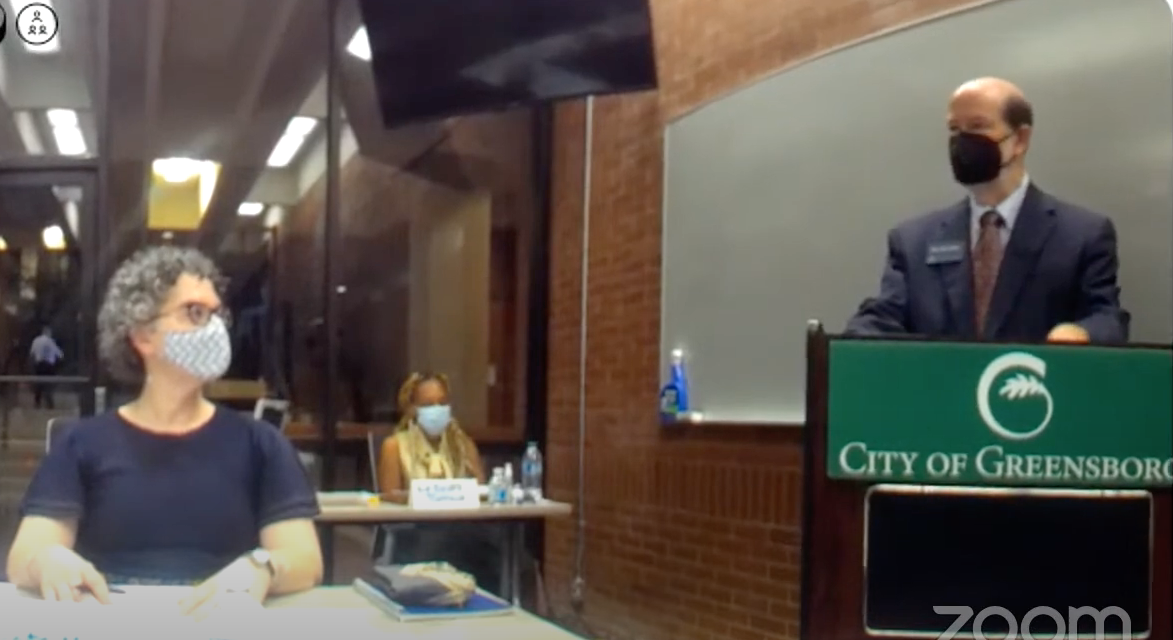The Citizens’ Redistricting Committee held its first more or less public meeting on Wednesday, Sept. 15 at City Hall.
The members of the committee, a lot of city staff and the consultants met but the public was not allowed to attend. The meeting was broadcast live at the Greensboro YouTube channel at www.youtube.com/watch, but, with all the participants wearing masks and a poor sound system, who exactly they were and what they were saying was at times extremely difficult to decipher.
The Greensboro City Council, which appointed the redistricting committee without knowing anything about the members except their gender and race, has been meeting virtually and holding hybrid meetings since April 21, 2020. Those meetings have not been without challenges, but the city has demonstrated month after month that it can hold a virtual or hybrid meeting where the public can not only see the people at the meeting, but hear what they are saying.
The big takeaway from this, the first meeting of the committee, is that the committee is going to be presented with maps drawn by the consultants from Parker Poe and city staff at the next meeting on Thursday, Sept. 23 and the committee will be expected to approve those maps.
On Sept. 30 the maps approved on Sept. 23 will be presented to the public for comment and on Tuesday, Oct. 12 the committee will make the final decision on the map or maps to be presented to the City Council.
Mac McCarley, the attorney with Parker Poe who has been hired to oversee the redistricting process, noted that the city only had 63 days to complete the task because by state law the redistricting maps have to be presented to the state by Nov. 17.
Of the five City Council districts only District 2 represented by Councilmember Goldie Wells is currently out of compliance. The standard is that the districts have to be within 5 percent of the ideal district. Currently District 2 is 5.03 percent larger than the ideal district.
McCarley said that the current districts could be brought into compliance by moving one precinct, but to make adjustments for future projected growth and other concerns the proposed maps might move as many as 12 precincts from one council district to another.
Several committee members asked if they could “start over” or make major changes to the current five districts and they were politely told that there wasn’t enough time, in other words the committee is expected to approve the districts presented to it by the consultants on Sept. 23.


Mr. Hammer, based on percentages you presented in an earlier posting shouldn’t all precincts be with 5% of every other precinct? An abstract on the 2010 redistricting effort indicates that no precinct should be more than 2.5% of every other precinct. Adding both percentages brings them to the ideal 5%.
No they all have to be within 5 percent of the ideal district. The ideal district is the population of Greensboro divided by 5. One district could be 3 percent less than the ideal and another 4 percent more and that would meet the standards.